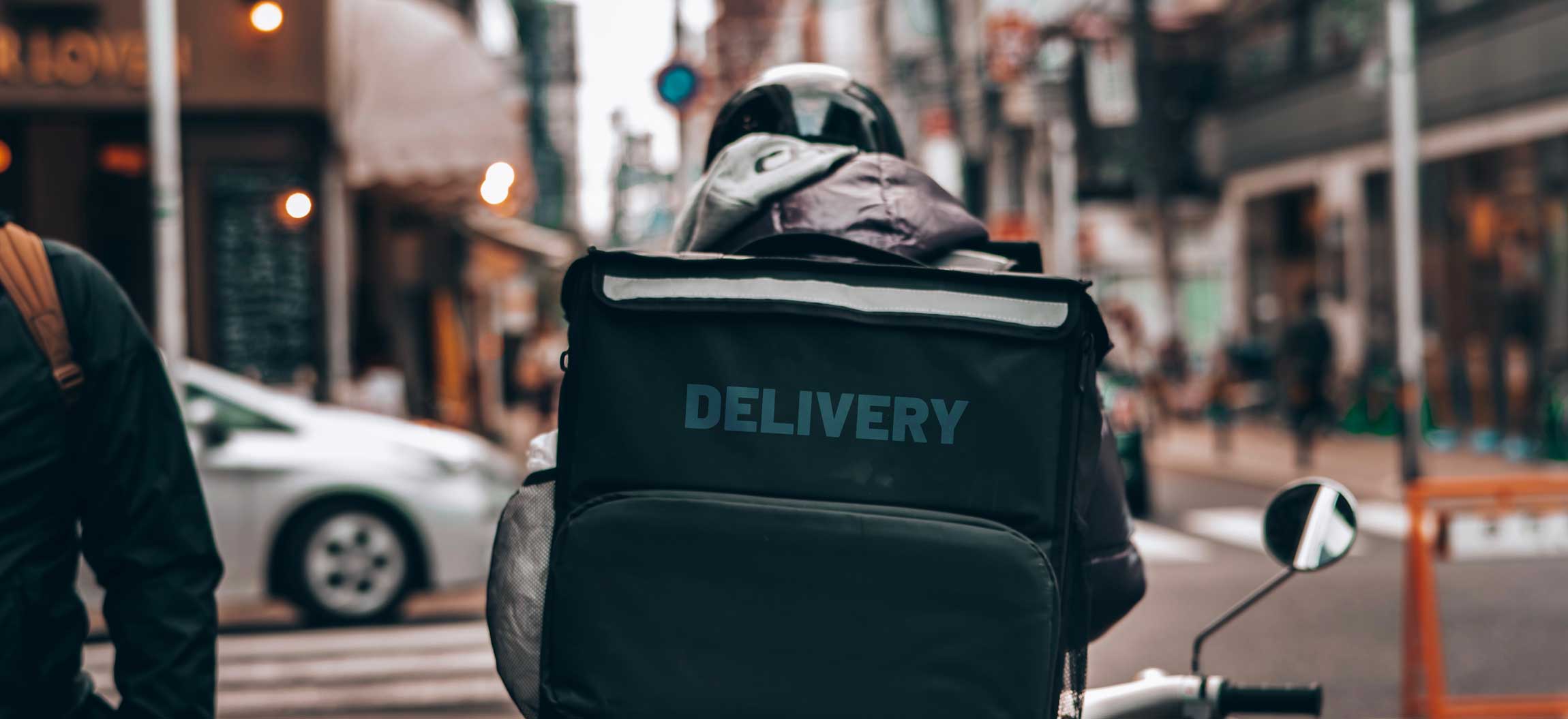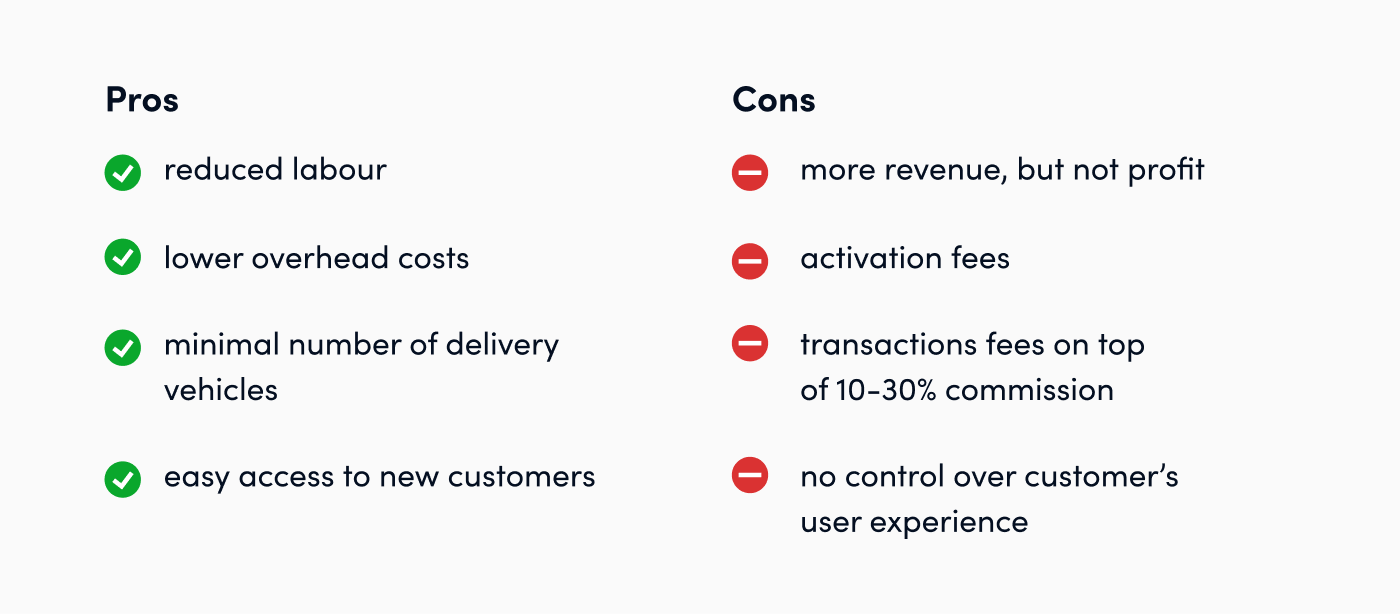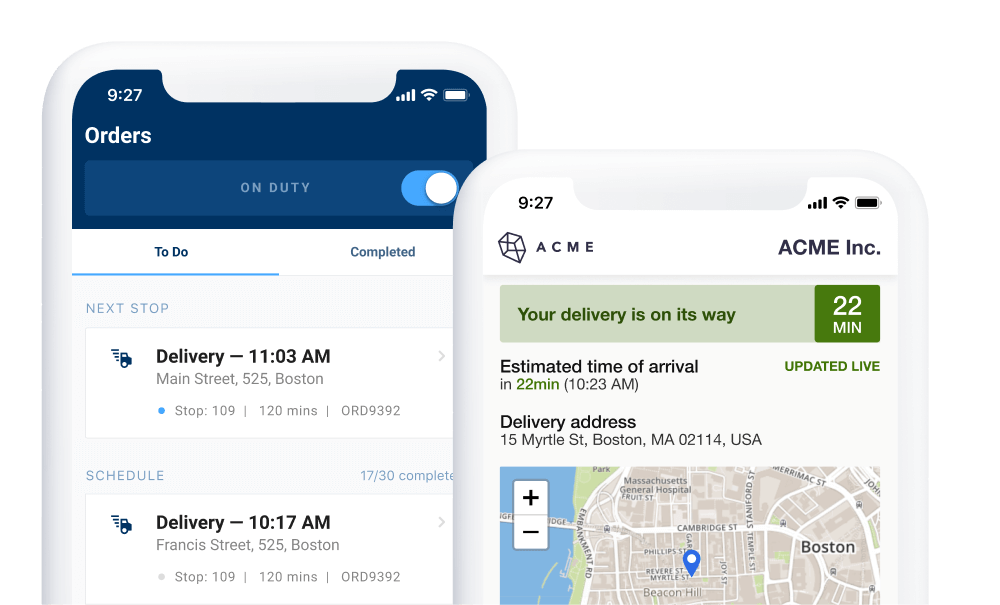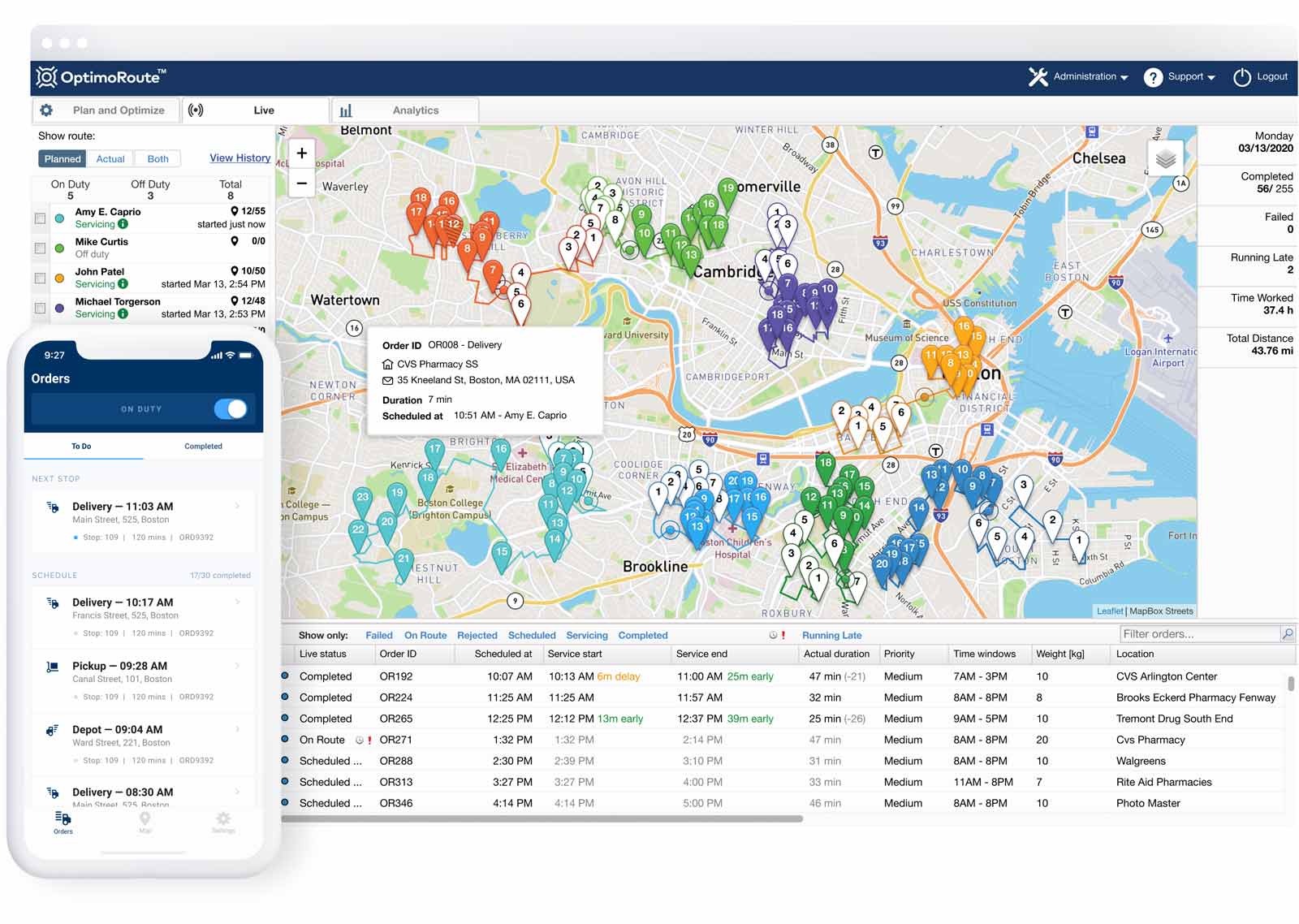Best Delivery Services for Restaurants and How to Start Offering Delivery
5 min read

The courier hand-delivering your restaurant’s food becomes the face of your brand, whether you like it or not. Which makes choosing your restaurant’s delivery service an important decision.
So, to help you make the best decision for your bottom line, your overall customer experience, and your company’s future, we’re breaking down four of the most popular delivery services for restaurants.
Join us for a pros and cons analysis of the top delivery services and a look at why some restaurants choose to keep delivery in-house.
Topics covered in this article:
- Why Delivery Is a Necessity
- 4 Best Delivery Services for Restaurants
- The Pros and Cons of Using a Delivery Service
- Keep Delivery In-house
- Get Started With In-house Delivery Software for Free
Why Delivery Is a Necessity
If you’re a restaurant that isn’t currently offering delivery, you’re missing out on a huge avenue for revenue. Online hot food delivery has been a growing market segment since before pandemic-related lockdowns spurred a boom in delivery for restaurants and retailers alike. This year alone, global online food delivery is expected to generate $136,431 million in revenue. By 2024, that number is anticipated to reach $182,327 million.
Smartphones and technological advances have made delivery a way of life, especially for consumers younger than 40. Research has shown that more than half of restaurant orders placed by millennials are for delivery or take-out. Delivery is the way of the future, and successful restaurants will have to embrace it, so the decision becomes not if your restaurant should deliver, but how will you do it?
4 Best Delivery Services for Restaurants
1. Uber Eats
Pricing – Uber Eats takes 15-30% of sales per order depending on order type (15% for pickup, 30% for delivery), and they charge a $350 activation fee.
Uber Eats (as you may have guessed by the name) is run by the same parent company as the Uber ride-sharing app. They function much the same way. When an order is almost ready at a restaurant, a nearby Uber Eats driver will be sent to pick up the food and bring it to the customer, who can track their driver on a map and see precisely where their order is along the way.
2. DoorDash
Pricing – DoorDash offers a 30-day free trial for merchants. After that, they typically take a 30% commission fee.
Of the on-demand food delivery apps available, DoorDash accounts for a significant portion of the United States market share. They reach over 80% of the U.S. population. In addition, DoorDash incorporates altruism into their business model through a project called Project DASH, the goal of which is to alleviate food waste and world hunger. According to their site, since January 2018, they have provided over 2.3 million donated meals to people facing hunger.
3. Postmates
Pricing – Commission is negotiated with individual merchants upon sign-up, but according to one source, these can range from 15%-30%. Postmates Partners do get the added benefit of avoiding credit card processing fees, however, as they are paid directly by Postmates via direct deposit.
Postmates is unique in that they offer customers on-demand delivery from non-restaurant merchants as well. Consumers can order food delivery and a pack of cigarettes or a bottle of alcohol in many locations. Postmates also offers their restaurant partners flexibility when it comes to how they receive orders (via a point-of-sale system, by phone, tablet, etc.).
4. GrubHub/Seamless
Pricing – Grubhub charges 10% commission for delivery and an additional 20% or greater marketing fee for delivery orders placed through their app or website. Additional fees may be applied, including a 3.05%+$.30 processing fee per transaction.
Grubhub doesn’t charge merchants an activation fee, and they provide a complimentary tablet for managing orders. Grubhub offers an array of marketing tools and educational materials for merchants, as well as access to promotions, rewards, and loyalty programs.
The Pros and Cons of Using a Delivery Service
Now that you have a general understanding of what makes each of these food couriers unique, let’s dive into their pros and cons.

Pros
One of the things that makes on-demand delivery services so appealing is that they’re a quick solution, and they do a lot of the work for restaurants, which are often understaffed and overworked. Delivery services can reduce labor, delivery vehicle, and overhead costs significantly, all while providing easy access to new customers.
According to DoorDash data, a whopping 92% of orders come from customers who are ordering from that particular restaurant for the first time. Restaurants are often able to reach a wider territory using delivery apps, too. DoorDash claims they can deliver to customers up to 25 miles away.
In an interview with the Chicago Tribune, Dave Bonomi, co-owner of Coalfire Pizza in Chicago, shared his experience using delivery services saying, “We would turn on DoorDash, and then turn it off after 15 minutes because we had so many orders.”
Cons
At this point, you might be asking yourself, “what’s the catch?” and Bonomi summed up the answer perfectly in his interview, “You are making more revenue but not profit [using delivery apps].”
The reason for this is that the costs often outweigh the savings. Ten-to-thirty percent commissions are bad enough, but merchants are finding those charges are only the beginning of the service fees making a dent in their profit margins. Recently Grubhub faced backlash after offering a promotion on their app for $10 off an order of $30 or more. Participating restaurants were surprised to find out that they were the ones footing the bill for this and paying the same fees for the original total of the order.
On top of commissions, Uber Eats charges merchants a $350 activation fee, and several delivery services charge fees for transactions and other additional items. One restaurateur’s Facebook post went viral as shocked viewers shared their horror at the outrageously high fees presented in the image, and unfortunately, the fees aren’t the only downside to third-party delivery services.
Restaurant owners using delivery companies give up control over their customers’ user experience, but they’re still on the hook for sub-par or canceled orders, which may, at times, be out of their control. Gourmet Marketing explains that:
“Even though the third-party service delivers the food, your customers will tend to hold you responsible for errors, omissions, and poor service, so you need to research how the process works.”
Reddit forums paint a very different picture from the one of food being seamlessly delivered at optimal temperatures to happy consumers. One Grubhub driver shared that delivery orders can “get passed around from driver to driver, then cancelled. The most common reason is low or no tip” — which has nothing to do with the restaurant.

Reduce your operational costs by 30%
Increase delivery capacity by 43%
Plan 7x faster
Keep Delivery In-house
If the cons of using a courier outweigh the pros for you, self-delivery is a great way to maintain a positive relationship with your customers and avoid exorbitant fees. Many restaurants, meal delivery services, and beverage companies are finding success going it alone.
Global restaurant-to-consumer revenue is expected to reach more than $65 million this year, making up a little more than 48% of overall online food delivery revenue, and that number is predicted to grow at a rate of 6.8% annually. While delivery apps may tout access to new customers, studies have found that many consumers prefer to buy directly from their favorite food and beverage establishments. Research conducted by Tillster and SSI found that “more than 55 percent of customers prefer ordering directly from a restaurant website.”
Use software to easily set up in-house delivery
Restaurant delivery apps are capitalizing on the power of food delivery software, and you can, too. Instead of using an app to outsource, you can use online ordering and delivery management software to overcome the main challenges restaurants face when adding delivery.

Get Started With In-house Delivery Software for Free
To help alleviate startup costs even further, and because we believe every restaurant should have the option of self-delivery, we offer a 30-day free trial of OptimoRoute. Our customer support team is available 24/7 to help you get set up and answer questions. You’ll also find a step-by-step guide for adding delivery services to your restaurant on our blog along with other helpful resources.
Try OptimoRoute™ for Free
No installation or credit card required


